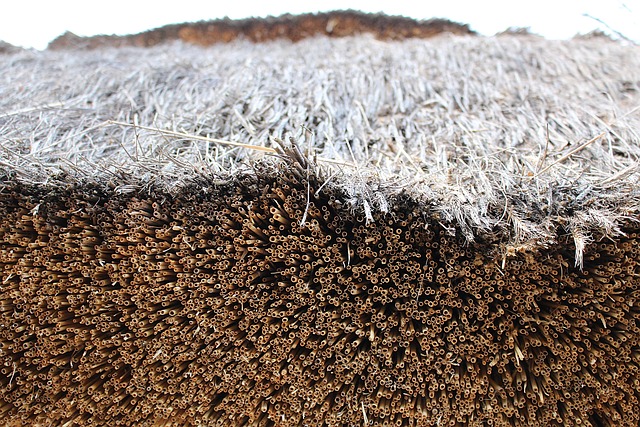In a world facing increasingly severe weather events, proactive storm preparedness is crucial. Focusing on roof maintenance, including regular inspections, prompt repairs, and efficient drainage systems, prevents structural damage. Prioritizing emergency storm roof repair protects investments, ensures family safety, and avoids post-disaster renovation costs. Signs of damage, like missing shingles or leaks, require swift action, starting with temporary tarps. Professional assessments are key for accurate identification of weak spots. Regular roof maintenance, use of impact-resistant materials, and community preparedness plans enable homes to better withstand extreme weather conditions, minimizing damage and emergency storm roof repair expenses.
In an era defined by unpredictable weather, preparing for severe storms is no longer an option but a necessity. This article explores comprehensive strategies to fortify your home against the most common weather-related roof damages, emphasizing the critical role of preventative measures. From understanding immediate post-storm repairs to long-term resilience plans, we guide you through every step. Learn how community collaboration and swift actions like emergency storm roof repair can significantly minimize potential losses.
Understanding the Importance of Preventative Measures
In today’s world, where extreme weather events are becoming increasingly frequent and intense, implementing preventative measures is no longer an option but a necessity. Preparing for future storms, be they hurricanes, tornadoes, or heavy rainfall, involves taking proactive steps to mitigate potential damage. One of the most crucial aspects of storm preparedness is addressing your roof. An emergency storm roof repair service can play a pivotal role in safeguarding your home and its inhabitants.
A sturdy, well-maintained roof acts as the first line of defense against harsh weather conditions. Preventative measures like regular inspections, prompt repairs, and ensuring proper drainage systems are in place can significantly reduce the risk of structural damage during storms. By prioritizing these actions, homeowners can protect their investments, avoid costly renovations post-disaster, and ensure the safety and comfort of their families.
Identifying Common Weather-Related Roof Damages
Roof damage caused by severe weather is a common occurrence, particularly during intense storms and hurricanes. Identifying potential vulnerabilities before an emergency strikes can save time and money in the long run. Common weather-related roof damages include missing or damaged shingles, flashing issues leading to leaks, and structural weaknesses that may go unnoticed until it’s too late.
Property owners should regularly inspect their roofs for any signs of wear and tear, especially after significant weather events. Promptly addressing these issues with emergency storm roof repair can prevent more severe and costly damage. Regular maintenance and timely repairs are key to ensuring a robust roof that can withstand adverse weather conditions.
Emergency Storm Roof Repair: What to Do Immediately
In the immediate aftermath of a severe storm, one of the most critical actions to take is assessing and addressing your home’s roofing system. Emergency storm roof repair isn’t just about stopping further damage but also ensuring your family’s safety. If you notice missing shingles, visible leaks, or any structural compromise, it’s crucial to act swiftly. The initial step should be securing temporary tarps over the affected areas to shield against ongoing weather conditions and potential water intrusion.
Professional assessment is recommended as soon as possible. Trained roofers can conduct a thorough inspection, pinpointing weak spots and providing tailored solutions. Quick response during emergency situations prevents secondary damages caused by prolonged exposure to wind, rain, or snow, ensuring your roof’s longevity and maintaining the overall integrity of your home.
Long-Term Strategies for Roof Resilience
In the face of an ever-changing climate, implementing long-term strategies for roof resilience is paramount to mitigating damage from future weather events, including intense storms and hurricanes. One key aspect is regular maintenance and inspections. Property owners should schedule periodic assessments to identify weak points, such as loose or missing shingles, damaged gutters, and flashing issues. Promptly addressing these problems can prevent minor repairs from escalating into costly emergency storm roof repairs during severe weather.
Additionally, choosing impact-resistant roofing materials offers significant protection. Modern options include reinforced shingles, metal roofing, and high-performance membranes designed to withstand high winds and flying debris. These materials not only enhance the structural integrity of a building but also reduce the likelihood of needing emergency roof repairs after a storm passes. Long-term planning, combined with robust roofing solutions, ensures that homes and businesses are better equipped to weather the most extreme weather conditions.
Community Preparedness and Collaboration
Community preparedness and collaboration play a pivotal role in ensuring resilience against future weather events, especially those involving severe storms and potential roof damage. By fostering a culture of readiness within neighborhoods, communities can significantly mitigate the impact of emergencies. This involves encouraging residents to create emergency plans, stockpile essential supplies, and familiarize themselves with local shelter locations. Regular community meetings or workshops can educate folks on basic survival skills, first aid, and the importance of quick response during storms.
Moreover, strengthening collaboration between community leaders, local authorities, and volunteer groups can streamline relief efforts. Establishing clear communication channels ensures efficient coordination of emergency services, including prompt deployment of teams for emergency storm roof repair. This collective approach not only aids in faster recovery but also fosters a sense of unity and shared responsibility among community members.
In light of the increasing frequency and severity of weather events, preparing for potential roof damages is no longer an option but a necessity. From understanding common vulnerabilities to implementing long-term strategies, this article has outlined comprehensive steps towards enhancing roof resilience. Emergency storm roof repair plays a pivotal role in minimizing disruption and costs during and after severe weather. By fostering community preparedness and collaboration, we can collectively mitigate risks and ensure more secure homes and neighborhoods.
